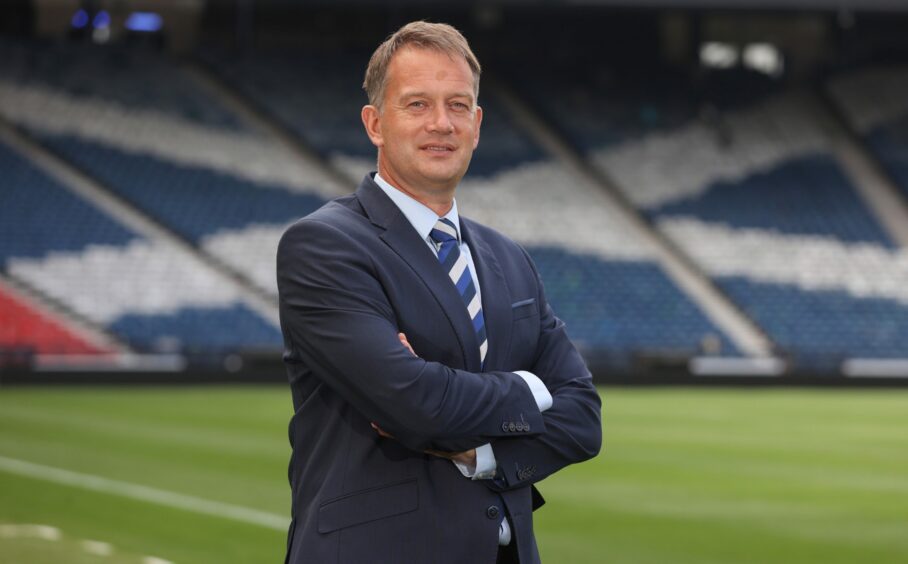The SFA’s desire to usher B teams into Scottish football will remain unless clubs can convince the governing body there is a better way to develop elite players.
The push for change has been halted temporarily after the SFA withdrew its motion for clubs to vote on creating a new fifth tier of Scottish football and admitting B teams from the elite clubs in Scotland earlier this month.
But the appearance of SFA chief executive Ian Maxwell on national radio on Saturday left no-one in any doubt the desire for change burns as bright as ever.
Maxwell conceded it had become quickly apparent due to the backlash from fans that the Conference League proposal was doomed to fail.
His comment the SFA does not need the approval of clubs to make such a change was largely overlooked.
But clearly if the hearts and minds of supporters is entrenched against it then as a public relations exercise it makes for a bad move on the body’s part to charge on.
The ideal solution was to have clubs get behind the move. When it didn’t happen common sense prevailed and it was withdrawn to spare any embarrassment.
But as Maxwell highlighted, the Conference League may not be happening yet but the need to improve the development of future talent for the Scottish national team has not diminished.
Is B teams the solution?
However, the SFA should consider whether B teams in Scottish football is the answer.
Goodness knows the contribution of the clubs to the SPFL Trust Trophy has been largely irrelevant thus far.
Last season 11 Premiership clubs entered B teams.
Six failed to make it past the first round, St Johnstone and Livingston were beaten in the second round and the three remaining representatives – Celtic, Rangers and Kilmarnock – were all knocked out in the third round.
Since being included in the tournament in 2016, no Premiership B team has reached the final.
It remains to be seen how having four under-21 teams of Premiership clubs unable to win promotion from a 10-team league created just to squeeze them in is going to make their young players any better.
Maybe the top flight can provide the answer
Maybe we need to look at being stricter in terms of forcing clubs to field their own players at first-team level.
Should a more radical approach be adopted? For example, how about putting in place a pre-determined number of minutes under-21 players must play at first-team level on a matchday?
Surely there is a debate to be had because if history has shown us anything it’s that there is no substitute for first-team experience when it comes to being an international player.
Captain Andy Robertson is the exception rather than the rule after being spotted at Queen’s Park before going up through the levels in his career to become a European Cup winner with Liverpool.
The rest have learned their trade in the first team of their respective clubs.
John McGinn and Kenny McLean have played starring roles in helping Scotland win four games out of four in their Euro 2024 qualifying campaign.
Yet they were in the St Mirren team which was relegated from the top flight in 2015.
They have both moved to England since then of course but the point stands – experience of men’s football at the highest level is what makes a player.
It is why clubs send young talent on loan to the lower leagues every season. It’s tried and trusted.
We’ve only got ourselves to blame
There is no disputing the conveyor belt of Scottish talent is slowing. But it’s because opportunities are limited by their clubs.
When Celtic are signing Odin Thiago Holm, a 20-year-old Norwegian midfielder with almost 100 appearances for Valerenga in the last four years, it’s hailed as a coup.
But there is not one 20-year-old in the current Celtic squad with the first-team experience the new arrival has.
In fact, there cannot be many at any club in the Scottish Premiership who can boast that experience.
It’s not a criticism of our clubs so much as a sign of how we seem to have got this all back to front.
Maybe Maxwell can start there rather than pressing on with a move which will relegate clubs en masse and angering fans – many of whom make up the Tartan Army by the way – in the process.
After all, it is the elite who have created this problem so why should the part-time clubs suffer because of it?



